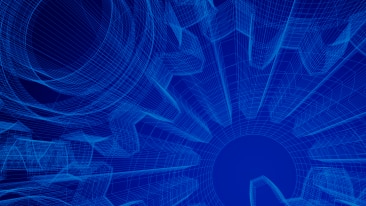Industrial AI
Artificial intelligence, by which computers are programmed to mimic intelligent learning behaviors to find solutions to problems, has begun to reach into every corner of our lives. Jeopardy champions are bested by a server rack with a voice simulator. Movie studios use machine vision algorithms to track the movements of actors so that they can be digitally enhanced with special effects. Engineers and architects use specialized software with gradient descent algorithms to optimize designs for strength, weight, and material usage.
Industrial organizations need the capabilities from Industrial AI applications to derive business outcomes and remain relevant. More importantly, Industrial AI as a driver of operational excellence can facilitate the transition to the new business models that will be necessary for these businesses to compete.
Industrial AI can provide significant insights by combining data science and machine learning with domain expertise to deliver fit for purpose, industrial applications to drive sustainable business value.
Data and training
Industrial AI requires a large amount of data with which to train its algorithm. Companies that have invested in industrial digitalization will already have a steady volume of information streaming from their assets. The data should be as complete and as thorough as possible. Current and historical operating conditions, maintenance records, delivery reports, even market conditions are important information for an Industrial AI algorithm.
Once the data has been collected, human operators make decisions about what they want the machine learning algorithm to work on. Different priorities can be loaded into the Industrial AI, such as value chain optimization, production optimization, reducing emissions, and maximizing margins. The user sets the priorities to optimize for, either through hard-coding the programs (by writing the values directly into the computer code), or a polished software interface that presents the user with options and then takes care of the back end coding. The Industrial AI then trains itself by making guesses about how the data might be related, testing those guesses, and then refining the guesses to more closely match the actual observations.
This trial and error approach occurs entirely in a computer, either on local computing resources or in the cloud. This means that the experimentation required to optimize a production line doesn’t have to happen on the floor, where it is costly, both in terms of risking asset failure as well as disrupting production as changes are made.
Using trained Industrial AI
Once the Industrial AI has been trained, how it is deployed depends on many factors, including the decision-making structure of a company. The changes suggested by an Industrial AI application may be counterintuitive, as it doesn’t carry any ingrained thinking habits when it approaches the data. As a result, it may produce advice that goes against conventional wisdom.
At established companies, the challenge is often how to continue innovating when there is significant inertia in the way things have always been done. When the conventional wisdom is actually an impediment to the company’s goals, Industrial AI can cut straight through the inefficient habits of thought. A company practicing smart enterprise, which empowers data-driven decisions across the entire hierarchy of a firm, will be able to rapidly implement the recommendations of the Industrial AI by delegating control of the assets in question to the Industrial AI system itself.
For an enterprise that would prefer to keep a human in the loop, the Industrial AI can produce a list of variables and adjustments, or simply articulate a relationship or connection that had previously escaped human attention. If a company uses process simulator software, the changes can be tested in a simulation before being deployed on the ground.
Benefits large and small
One of the big advantages Industrial AI brings to the table is that it finds connections between seemingly disparate pieces of information.
For example, a company that was looking to reduce equipment failure used Industrial AI to search for the cause of a valve blowout. The reliability managers already had some knowledge that the valve blowout was preceded by a spike in pressure minutes before the asset failed. During training, the Industrial AI picked up on a subtle wobble in pressure that would occur weeks before failure, a much more subtle tell of impending production disruption with orders of magnitude more warning.
Industrial AI can also incorporate market information to optimize the value chain based on evolving prices of inputs and outputs. This is especially important in the petroleum industry, where AI for oil and gas helps firms stay nimble when prices change dramatically. Prior to the implementation of Industrial AI, the decision to scale back production would require agreement between many levels of management. Now, a smart enterprise will let the algorithm coordinate these changes. The machine learning software can keep information from many levels of an organization at hand, letting market and sales data inform maintenance scheduling, for instance.
FAQs
How is Industrial AI related to industrial robotics?
Industrial robots have been a widely accepted staple of manufacturing for decades, notably in car manufacturing. Artificial intelligence has improved the functioning of these robots through developments in computer vision research and generative design, but robotics is generally considered to be a different discipline than Industrial AI.
Does each Industrial AI program have to be written fresh for each use case?
No, the advantage of Industrial AI and machine learning is that it is generalizable; it can learn based on new inputs. Neural networks, one of the most common implementations of artificial intelligence, are adaptable and general purpose.
Related Content
Blog:
Are You Ready for Industrial AI? Our Checklist Has the Answer
Executive Brief:
Industrial AI Accelerates Digital Transformation for Capital-Intensive Industries
Related Solutions
- Drive Best-in-Class Reliability for Industries
- Emissions Management for Refining and Olefins
- Improve Production Optimization for Refining and Olefins

